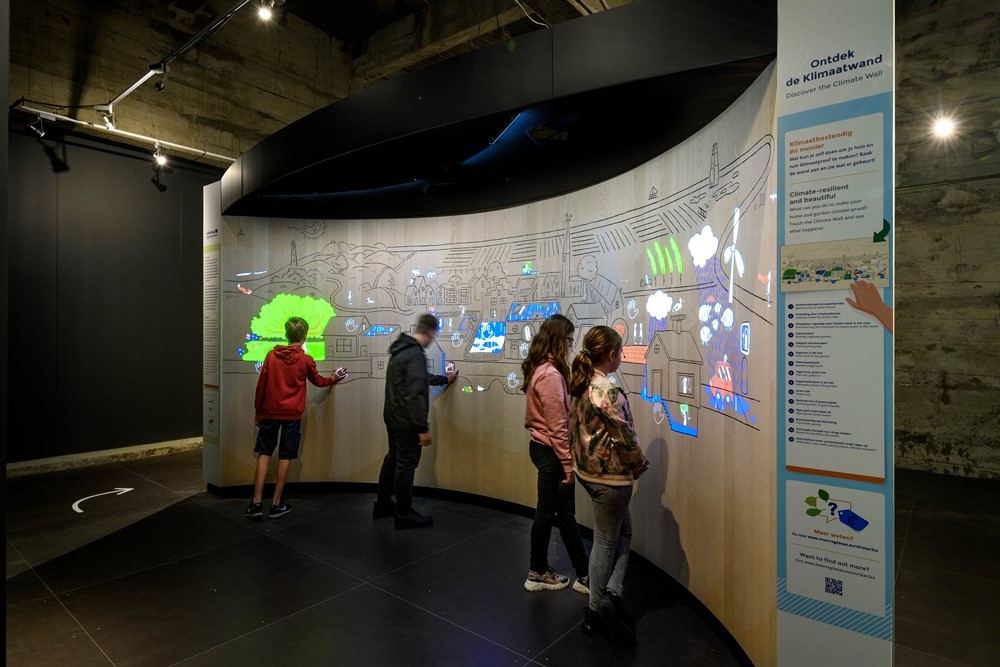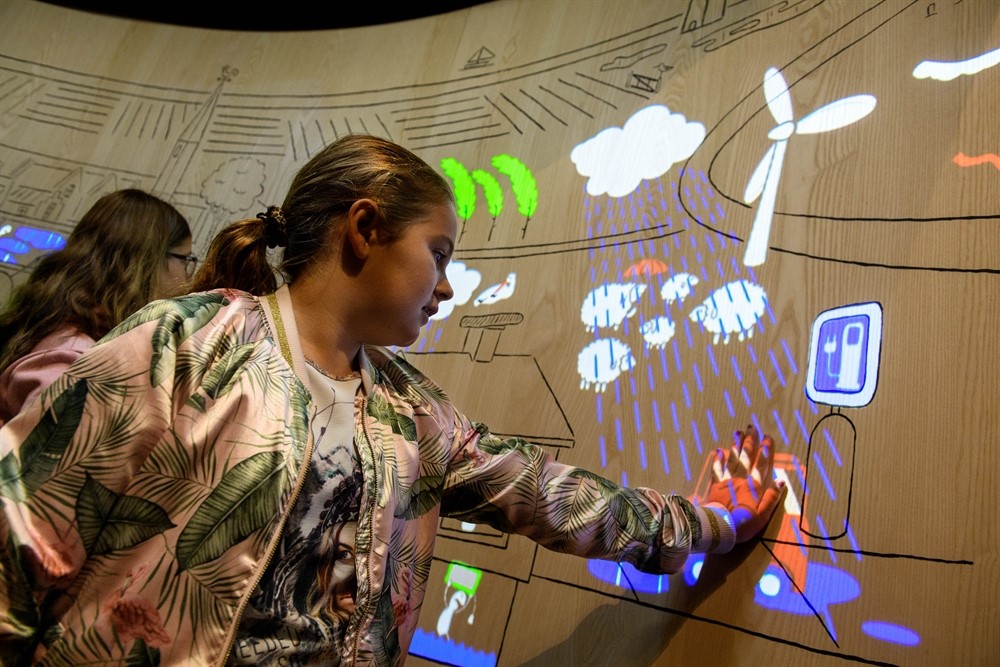Interactive climate wall in Flood Disaster Museum
In early July 2020, the Flood Disaster Museum in Ouwerkerk opened a special exhibition, “The Climate Wall”. The interactive climate wall lets visitors discover what measures they can take themselves to counteract various consequences of climate change.
How has the idea come about?
The idea for this exhibition originated from the Interreg STAR2Cs project. One of the goals of this project is to develop easily accessible ways to raise awareness of climate change and of individual measures that people can already take. At this exhibition, these issues are presented in a fun and educational format. Children can visit the exhibition via their schools or with their parents. The exhibition can also serve as a lead for visitors to discuss the issues with each other and with others.
Who has created the exhibition?
Following a tender procedure, Podium communications agency in Utrecht was commissioned to create the exhibition. To this end, the agency joined forces with the municipality of Schouwen-Duiveland, Johan Klungel, the Flood Disaster Museum, and Louis van Krieken Design. The technology was provided by Rapenburg Technologies and Hypsos museum designers. Podium came up with the idea of an interactive climate wall: a curved wooden wall presenting animated examples of climate adaptation when touched by visitors. The tender brief was to create a low-threshold, attractive, and interactive exhibition on climate adaptation for all ages, using existing examples. The exhibition needed to be compact and transportable to other locations.
What does the exhibition look like?
In the exhibition, Johan Klungel incorporated existing practical examples into attractive illustrations and animations. He created a total of fifteen short animations. The animations are projected onto a static background comprising elements of the island of Schouwen-Duiveland. When visitors touch the wall, they can view the animation and listen to the sound effects for that particular spot. The back of the wall provides information on the projects carried out under STAR2Cs.

What effect does the exhibition have?
The climate wall in the Flood Disaster Museum has already attracted a wide range of visitors. Responses were positive. Other countries have also shown an interest in the Climate Wall.
Lessons to be learned
The initiators have learned the following lessons from creating this exhibition and from the responses it has elicited.
- Use local examples in the exhibition.
- Adopt a positive approach, with a touch of humour, and show that people really can make a difference.
- Capitalise on the knowledge and expertise of specialist agencies when creating the exhibition.
- Try to keep it simple.
- Make clear agreements beforehand, on how long the exhibition can stay at the venue, and on the subsequent venue for the exhibition.
- Apply for European grant schemes and collaborate.
Contact person
Rob Heintjes
Gemeente Schouwen-Duiveland
rob.heintjes@schouwen-duiveland.nl

